As a coffee enthusiast with a budding passion for the deep, intricate flavors of freshly roasted beans, you may have always dreamed of starting your own coffee roasting business. Taking this aspiration from dream to reality involves venturing into the world of commercial coffee roasters—a thrilling and challenging journey for any beginner.
Understanding the procedure might be daunting, right? This article provides all the essential tips and insights to get your roasting adventure off to a good start. Expect clear, practical advice that will help you avoid common mistakes and get that ideal roast from your first batch. Let's get started and turn your coffee-roasting thoughts into reality!

Understanding Commercial Coffee Roasters
A commercial coffee roasting machine is like the big leagues of coffee making. These machines aren’t just bigger and better; they’re precision powerhouses designed to handle heaps of coffee beans and turn them into the delicious coffee cafes and aficionados rave about.
At the heart of these coffee roasters are a few key players:
The Drum
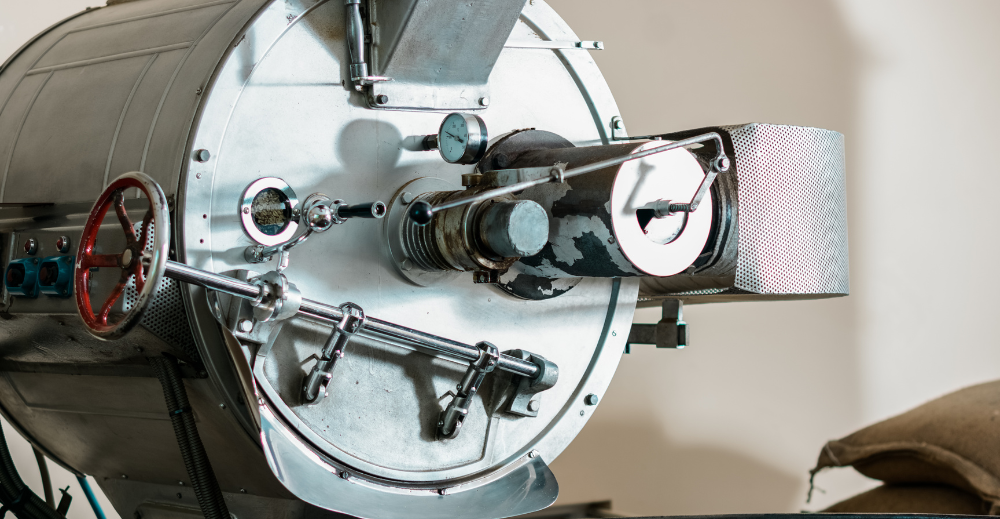
The drum, a crucial component of drum roasters, isn’t just any old cylinder. This is where the roasting process happens. With its constant rotation, it ensures that each bean gets an equal tan, avoiding the party fouls of under or over-roasting.
In many high-quality roasters, this drum is made of cast iron, a material chosen for its superb heat retention and distribution. This ensures that the beans are roasted uniformly, preserving their natural flavors and aromas without interference.
The Heat Source
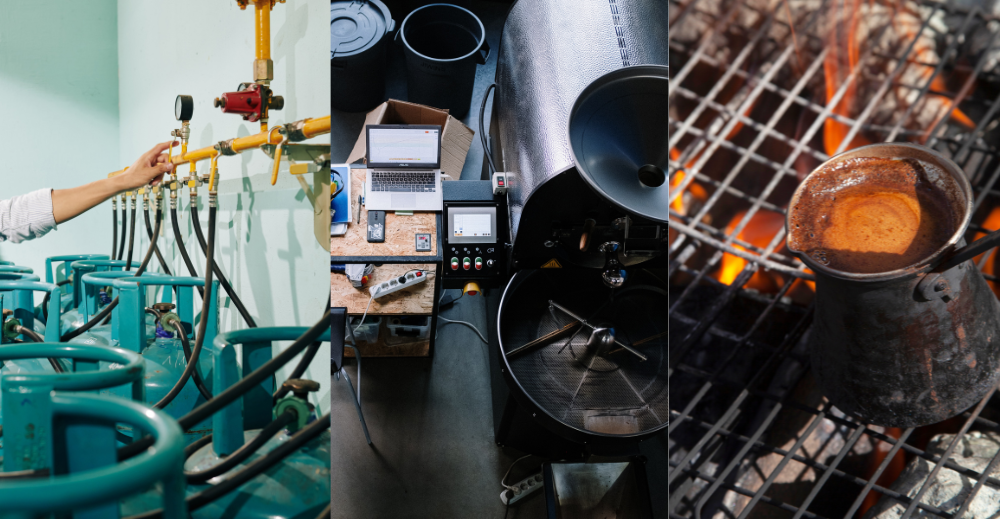
Moving on to the heat source—it could be natural gas, electric, or old-school wood. The heat source dictates the roast’s rhythm, transforming those green beans into aromatic coffee beans. It’s like the tempo in music; getting it right means everything flows smoothly, and each bean reaches its peak performance.
The Cooling Tray
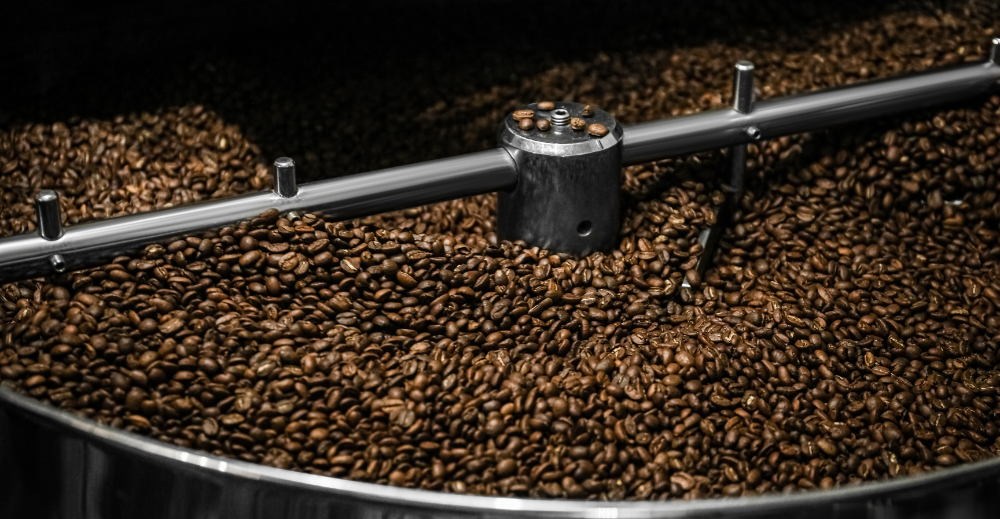
Once the beans have given their all, the cooling tray swoops in to bring the temperature down quickly, preserving the beans’ rich flavors and aromas. It captures the essence of the roast at just the right moment, so none of the hard work goes to waste.
Getting cozy with how these parts work together is your ticket to the coffee roasting business. It’s like knowing your car; you can drive it, sure, but understanding what’s under the hood? That puts you in the driver’s seat, letting you tweak and fine-tune your way to creating those signature roasts that’ll have everyone buzzing.
Preparing to Roast
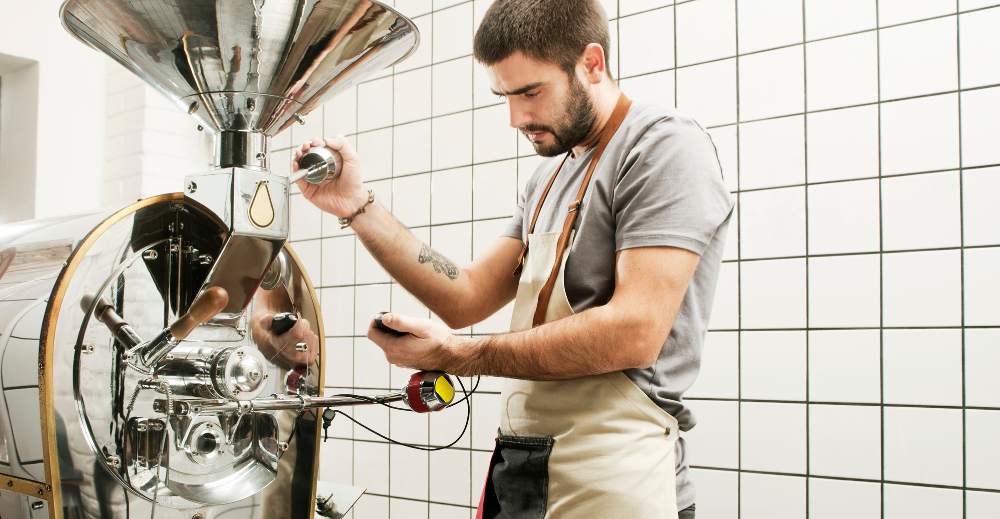
Before we get started, let’s talk about setting everything up. Preparing for a roast means having the right ingredients and the right environment.
Here’s how to get everything lined up perfectly:
-
Selection of Green Coffee Beans:As you gear up for your roasting journey, it's crucial to consider the flavor adventure you're aiming to achieve. Are you in the mood for something bold and earthy, or does a light and fruity profile sound more like your cup of coffee?
Each bean has a unique story, and picking the right one is the first step in a process that leads to a perfect cup of coffee. Choosing wisely lays the groundwork for everything that follows, ensuring the final product is as close to your vision as possible.
-
The Roasting Environment:Believe it or not, the space where you roast is a big deal. Temperature, humidity, and good old airflow aren’t just weather talk – they’re critical factors that can make or break your roast. Too hot or too humid, and you might as well be roasting in a sauna. Ventilation is your best friend here, keeping the air moving and the environment stable.
-
Equipment Check: Step one is to make sure your coffee roaster is spotless and ready to go. A quick once-over to check for any leftover chaff or rogue coffee bits from your last roast can save you from any surprises later on.
If you're teaming up with a gas roaster, remember to check those vents and gas lines. Ensure everything is in top shape so that when it's go-time, you're all set for a smooth roast.
-
Safety Measures: Keeping a fire extinguisher within easy reach is a smart move because, well, you never know. And it's not just about having it there – give all your safety gear a thorough check to ensure everything's working just right. It’s like a little peace of mind, making sure you're all set for a worry-free roast.
The Roasting Process
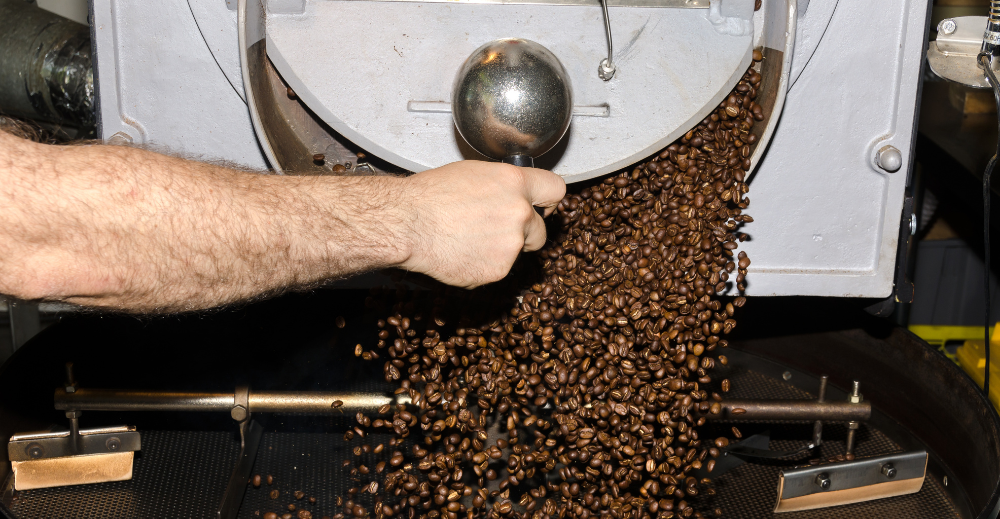
Roasting in a commercial coffee roasting machine is where you turn those green coffee beans into the aromatic beauties we all love.
Let’s break it down:
-
Preheat the coffee roaster: Just like you wouldn’t bake a cake in a cold oven, you shouldn’t start roasting in a cold roaster. Get that coffee roasting machine nice and hot before the beans go in.
-
Load the beans: This is your starting line, where the transformation begins. Pour those green beans in and get ready for the magic.
-
Monitor the roast: This is where your senses come into play. There are a few stages you’ll want to pay attention to:
-
Drying:The beans start to lose their green, and moisture starts to evaporate.
-
Browning: This is where the Maillard reaction kicks in, giving the beans those rich, complex flavors.
-
Development: The flavor develops, and this is where your roasting skills truly shine.
-
During these stages, you’ll hear some pops or cracks, famously known as the First Crack and Second Crack. The First Crack means the beans are expanding and cracking open, moving from light to medium roasts. The Second Crack is when things get darker and oilier, heading towards those dark roasts.
Here are a few tips on adjusting the variables:
-
Temperature: Higher temps speed up the roast but can risk burning the beans. Lower temps take longer but can enhance the depth of flavor.
-
Airflow: This can help control the roast’s pace and even the heat distribution.
-
Time: The longer you roast, the darker the beans. But remember, timing is everything. Roast too long, and you might lose those delicate flavors.
Roasting coffee is part art, part science. By tweaking these variables, you can influence the flavor and aroma of your coffee, making each batch uniquely yours.
Common Pitfalls and How to Avoid Them
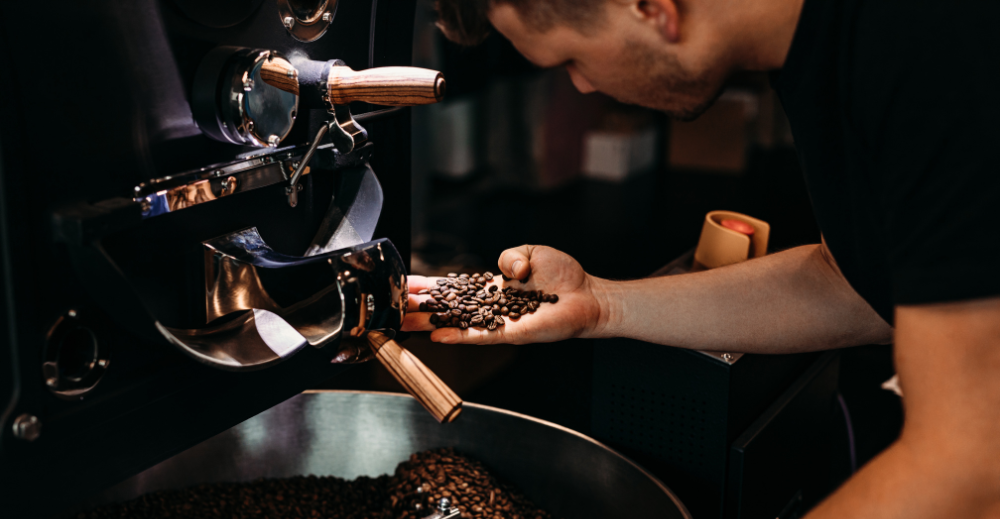
When you enter the world of coffee roasting, you’re bound to encounter a few bumps. It’s part of the learning curve, but hey, why not smooth out those bumps with some insider knowledge? Let’s discuss common pitfalls and how to sidestep them like a pro.
Over-roasting and under-roasting – Over-roasted beans go dark and oily, losing their unique flavors to a burnt bitterness. Under-roasted beans, on the other hand, can taste grassy or sour, not having had enough time to develop their full flavor profile. The fix? Keep an eye on the color and aroma, and listen for those cracks to find that sweet spot.
Smoke and chaff—they come with the territory. But too much smoke can spell trouble, not just for your beans but also for your health and safety. Good ventilation is key here. Chaff, those flaky bits shed by roasting beans, needs to be managed to keep your workspace clean and fire risk low. Regular cleaning and proper ventilation are your best friends.
Uneven roasts can be a real party pooper. You want all your beans invited to the flavor party, not just some. This often comes down to batch size and bean movement. Overcrowding your coffee roaster is a no-go. Beans need space to dance around and get evenly roasted. And make sure they’re moving consistently. It’s a bit like crowd surfing; you want every bean to get a chance to ride the wave.
Avoiding these roasting mistakes keeps things smooth and helps you nail your roasting technique. Remember these pointers, and you’ll be not just making great coffee; you'll be setting up your coffee shop to sell coffee that has everyone talking.
Final Tips on Commercial Coffee Roasting Machines
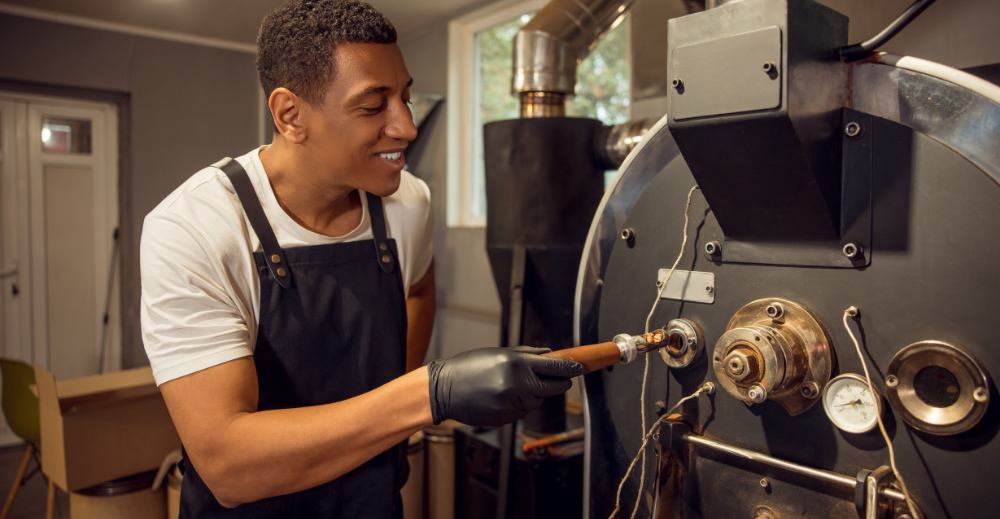
If you're entering the coffee roasting business, it's okay to feel a bit daunted. But here's the thing: every expert roaster started where you are now. Getting to know your coffee roasting machine, monitoring crucial roasting stages, and tweaking variables to perfect your batch are all part of the journey toward mastering the best commercial coffee roasters.
Your coffee roastery isn't just a place where beans are roasted; it's where passion meets practice, and you're at the heart of it all.
For a deeper dive into coffee roasting or to discover the different types of commercial roasters, don't hesitate to visit our blog. We're continuously brewing new guides, tips, and insights to help you master the craft.
We're also keen to hear from you! Share your roasting adventures, questions, or any hurdles you've encountered in the comments below. Let’s create a community of coffee enthusiasts who learn from and inspire each other.
Your journey to having a standout coffee shop that sells amazing coffee begins now. Let’s roast coffee that will make the world take notice!


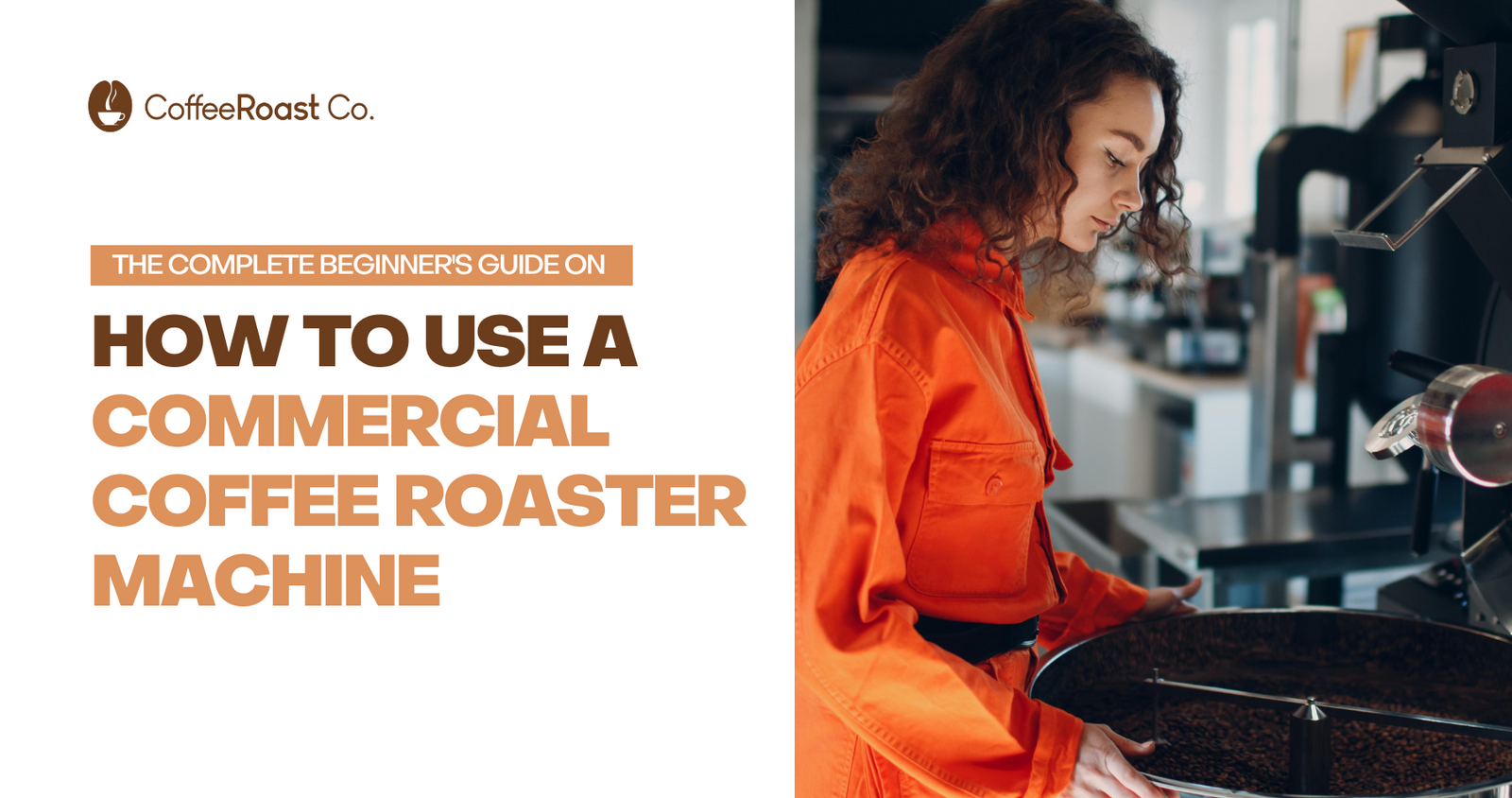



Christopher Garcia
6月07,2024
Excellent thread